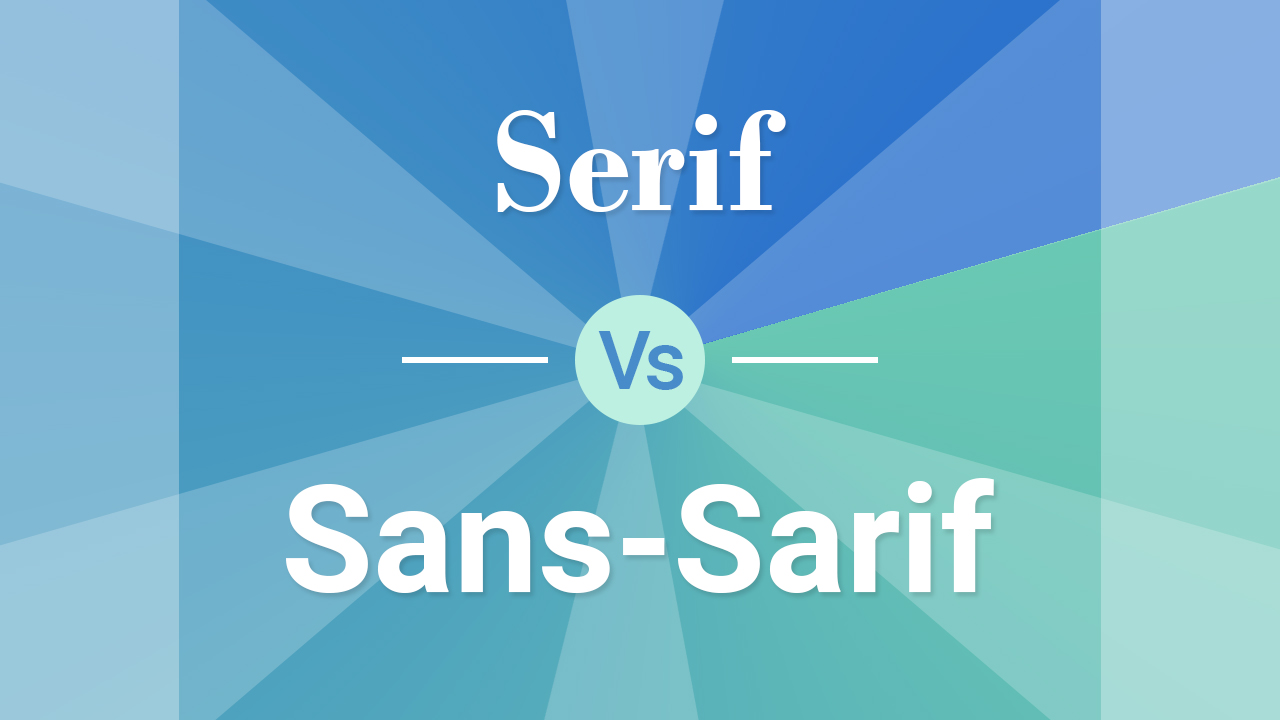Typography, the art of arranging text, is a cornerstone of design and communication. Two fundamental categories of fonts, serif, and sans-serif, are often at the heart of typographic choices. In this article, we will explore the world of serif and sans-serif fonts, understanding their differences, examining their best use cases, and appreciating their impact on visual communication.
Table of Contents
What Are Serif and Sans-Serif Fonts?
Serif Fonts: Elegance and Tradition
- Serifs are the small lines or decorative features that appear at the ends of the strokes in serif fonts. They give a more traditional and formal appearance.
- Common serif fonts include Times New Roman, Georgia, and Baskerville.
- Serif fonts are often used in print media, books, and formal documents due to their historical association with readability.
Sans-Serif Fonts: Modern Simplicity
- Sans-serif fonts, on the other hand, do not have those decorative lines or “serifs.” They offer a cleaner and more modern look.
- Common sans-serif fonts include Arial, Helvetica, and Calibri.
- Sans-serif fonts are prevalent in digital media, websites, and user interfaces, where legibility on screens is essential.
Distinguishing Characteristics
Let’s dive deeper into the distinguishing features of serif and sans-serif fonts:
Serif Fonts:
- Serif fonts are known for their decorative, finishing strokes at the ends of characters.
- They are often perceived as classic, elegant, and more formal.
- Serif fonts are generally considered more readable in print, especially for lengthy text passages.
- The serifs help guide the reader’s eye along the text.
Sans-Serif Fonts:
- Sans-serif fonts are characterized by their clean, straight lines without the decorative extensions.
- They exude a modern, minimalistic, and straightforward aesthetic.
- Sans-serif fonts are typically chosen for screen display due to their readability at smaller sizes.
- They offer a more contemporary and casual vibe.
Examples of Serif and Sans-Serif Fonts
Here are some examples of serif fonts:
- Times New Roman: This is one of the most widely recognized serif fonts. It’s known for its classic and elegant appearance, making it a popular choice for academic and formal documents.
- Georgia: Georgia is a web-safe serif font designed for on-screen readability. It combines elegance with legibility, making it suitable for web content.
- Garamond: Garamond is a classic serif font known for its timeless appeal. It’s often used in book design and editorial publications.
- Baskerville: Baskerville is a transitional serif font with a refined, high-contrast design. It’s often chosen for its readability in print.
- Palatino: Palatino is a versatile serif font that works well in both print and digital media. It has a pleasant, readable style.
- Didot: Didot is a modern serif font with high contrast and thin, elegant letterforms. It’s frequently used in fashion and high-end editorial design.
Here are some examples of sans-serif fonts:
- Arial: Arial is a clean and simple sans-serif font commonly used in both print and digital media. It’s known for its readability and neutrality.
- Helvetica: Helvetica is a widely recognized sans-serif font that exudes modernity and simplicity. It’s a popular choice for branding and design projects.
- Calibri: Calibri is a default sans-serif font in Microsoft Office applications. It’s clean and easy to read, making it suitable for various document types.
- Verdana: Verdana is a web-safe sans-serif font designed for on-screen readability. Its round and open letterforms are ideal for digital content.
- Roboto: Roboto is a versatile sans-serif font developed by Google. It’s used for various Google products and offers a modern, friendly look.
- Avenir: Avenir is a sans-serif font with a harmonious and balanced design. It’s often chosen for its versatility and clean appearance.
Best Use Cases
Understanding when to use serif or sans-serif fonts is crucial for effective communication:
Serif Fonts:
- Ideal for print materials such as books, newspapers, and formal documents.
- Suitable for classic and timeless branding.
- Often preferred in the body text of printed publications.
Sans-Serif Fonts:
- Excellent for web design, digital interfaces, and screen-based content.
- A popular choice for modern and clean branding and logos.
- Works well for headings and labels where readability is essential.
Combining Serif and Sans-Serif Fonts
Sometimes, a harmonious blend of both serif and sans-serif fonts can be a winning choice. This combination adds visual interest and contrast to your design.
- Use serif fonts for the body text to enhance readability, especially in long articles.
- Utilize sans-serif fonts for headings and subheadings to create a visual hierarchy.
Conclusion: The Art of Typeface Selection
The choice between serif and sans-serif fonts is not a matter of right or wrong but a decision guided by design goals, context, and readability. Understanding the characteristics and distinctions of these font categories empowers designers to make informed choices that effectively communicate their message.
As you embark on your design journey, remember that typography is not merely a collection of letters but a powerful design element that shapes the way we perceive and engage with content. Whether you opt for the timeless elegance of serifs or the modern simplicity of sans-serifs, the art of typography is at your fingertips, ready to enhance your designs and captivate your audience.
Frequently Asked Questions
Serif fonts are often used in print media, like books and newspapers, as well as for formal documents. They are ideal for long passages of text due to their readability.
Sans-serif fonts are commonly used for digital media, websites, and user interfaces. They are known for their clarity and are preferred for modern, clean designs.
Yes, combining both serif and sans-serif fonts can create visual contrast and hierarchy in your design. It’s a common practice to use them together for headings and body text.
Yes, they can. Serif fonts are often preferred for lengthy reading as the serifs guide the eye along the text. Sans-serif fonts are chosen for digital media for their clean lines and readability on screens.
Your choice of font depends on your design goals and the context of your project. Consider the mood and style you want to convey and the medium you’re designing for.
Yes, it’s common to use both fonts in the same document to create visual variety. Just ensure that the fonts you choose complement each other.





